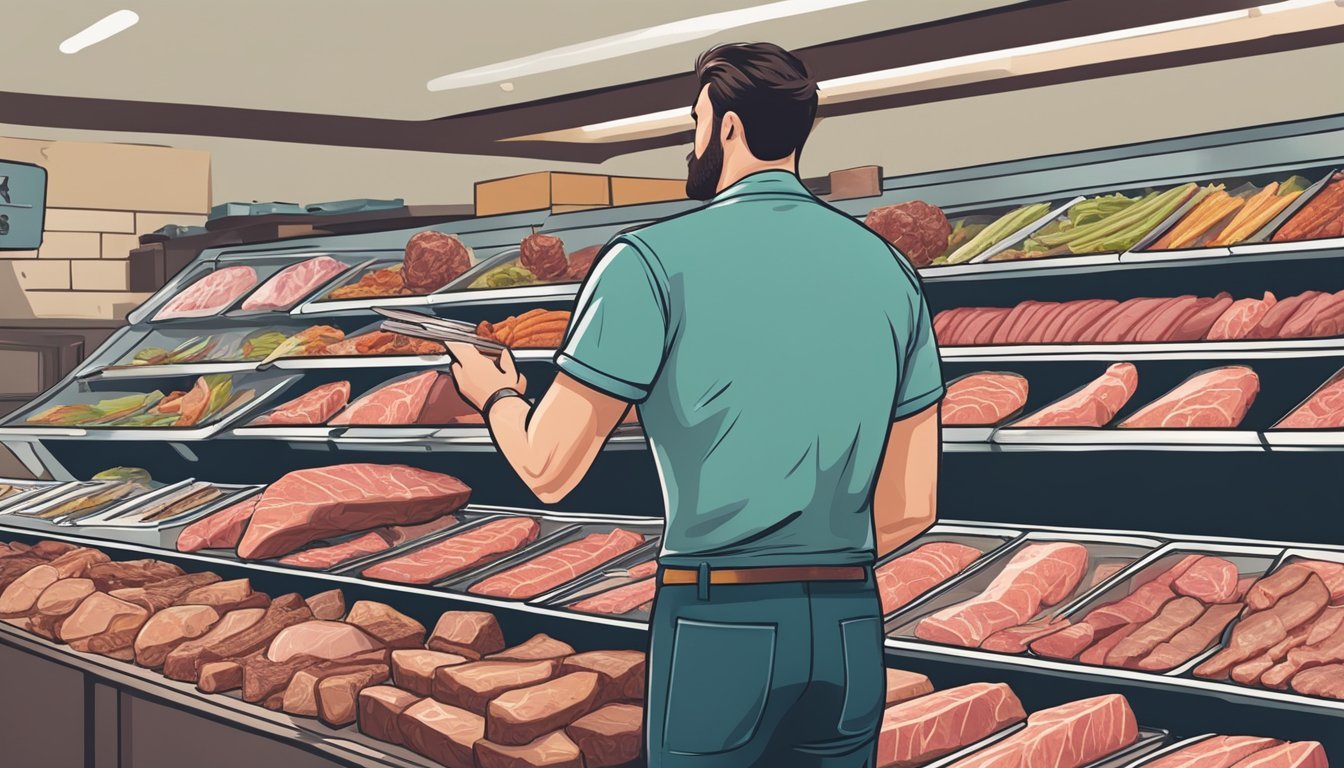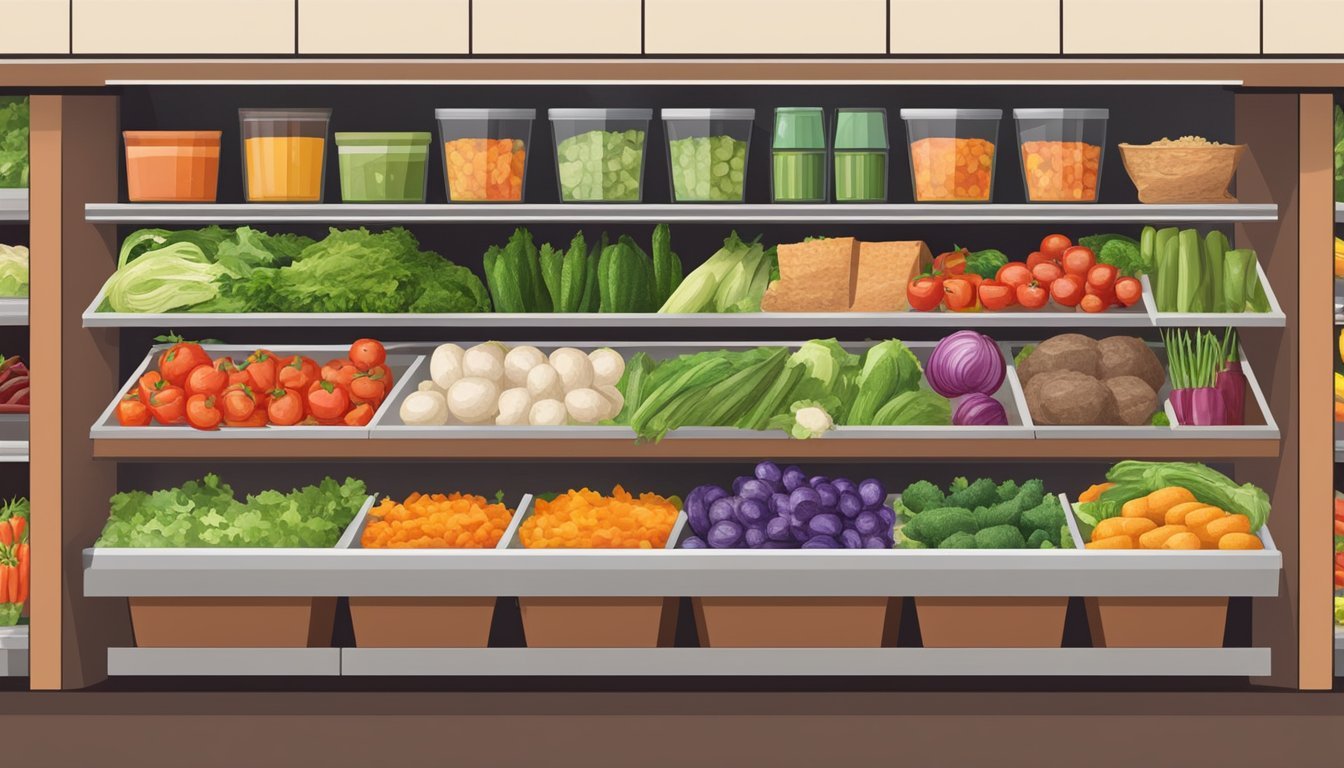Rib Lover's Paradise: Uncovering the Best Grocery Stores for Finger-Licking Ribs
Choosing the right grocery store for purchasing ribs can make a significant difference in your barbecue experience. The best grocery stores for ribs typically include major chains like Costco, Walmart, and Kroger, which offer a wide selection of quality pork and beef ribs at competitive prices. These stores often stock popular options such as country-style ribs, spare ribs, and St. Louis-style ribs.
When selecting ribs at the grocery store, shoppers should look for well-marbled meat with a pinkish-red color and avoid packages with excessive liquid. Many stores also offer pre-seasoned or pre-cooked ribs for added convenience. For those seeking specialty cuts or higher-end options, butcher shops or specialty meat markets within grocery stores may provide a more curated selection.
Flavor enthusiasts might consider purchasing dry rubs or barbecue sauces alongside their ribs to enhance the eating experience. Some grocery stores even carry branded products from popular barbecue restaurants, allowing customers to recreate restaurant-quality ribs at home.
Choosing the Right Grocery Store
Selecting the ideal grocery store for purchasing ribs involves considering meat quality, selection, and pricing. Several major chains offer distinct advantages when it comes to their meat departments.
Factors Affecting Meat Selection
Meat quality varies significantly between grocery stores. Look for clear labeling of meat grades and origins. Premium stores like Wegmans often provide detailed information about their meat sources.
Some chains prioritize organic and grass-fed options. Trader Joe's, for example, stocks a curated selection of higher-quality meats.
Price is another key factor. Walmart and Aldi typically offer lower prices, while Costco provides bulk options that can be cost-effective for larger purchases.
Grocery Store Chains Overview
Publix is known for its fresh meat selection and knowledgeable butchers. The chain often runs good promotions on ribs and other cuts.
Wegmans stands out for its premium meat department. They offer a wide variety of high-quality ribs, including local and organic options.
Costco excels in bulk purchases. Their meat quality is generally good, and buying in larger quantities can lead to significant savings.
Walmart provides affordable options but may have a more limited selection of premium cuts.
Availability and Seasonal Considerations
Rib availability can fluctuate seasonally. Many stores increase their rib inventory during summer months for grilling season.
Some chains offer special discounts on ribs around holidays like Memorial Day and July 4th. Planning purchases around these sales can lead to better deals.
Specialty cuts or premium ribs may be more readily available at upscale chains like Wegmans or regional grocers.
Consider freezing ribs when they're on sale. Properly stored, they can maintain quality for several months, allowing you to take advantage of seasonal pricing.
Understanding Different Types of Ribs
Pork ribs come in several distinct cuts, each with unique characteristics in terms of flavor, texture, and cooking requirements. The main types include spareribs, baby back ribs, and St. Louis-style ribs.
Comparison of Rib Cuts
Baby back ribs come from the upper part of the pig's rib cage, near the loin. These ribs are shorter, curved, and have less fat. A full rack typically contains 11-13 bones. Baby backs are tender and lean, making them a popular choice for quick cooking.
Spareribs are cut from the belly area. They're larger, flatter, and contain more fat and connective tissue. This extra fat contributes to a rich flavor and juicy texture when cooked low and slow.
St. Louis-style ribs are spareribs with the breastbone and cartilage trimmed away. This rectangular cut is easier to cook evenly and eat. They offer a good balance of meat and fat.
Determining Meat Quality
When selecting ribs, look for even marbling throughout the meat. Marbling refers to the white streaks of fat within the muscle, which enhance flavor and tenderness.
Check for a pinkish-red color in the meat. Avoid ribs with dark spots or discoloration.
Feel the texture of the meat. It should be firm but not tough. Avoid ribs that feel slimy or have an off odor.
Look for ribs with a consistent thickness across the rack. This ensures even cooking.
Consider the amount of meat on the bones. Meatier ribs offer more value but may require longer cooking times.
Preparation and Cooking Techniques
Proper preparation and cooking techniques are crucial for transforming store-bought ribs into a mouthwatering meal. The right methods enhance flavor and ensure tender, juicy results.
Seasoning for Maximum Flavor
Remove the membrane from the back of the ribs to allow better flavor penetration. Pat the ribs dry with paper towels before applying seasoning. A dry rub consisting of salt, pepper, paprika, and brown sugar creates a flavorful crust. Massage the rub into the meat, covering all surfaces. For added depth, let the seasoned ribs rest in the refrigerator for 2-4 hours or overnight.
Consider using a mustard base before applying the dry rub to help it adhere better. For a tangy twist, brush the ribs with apple cider vinegar before seasoning. Experiment with different spice combinations to find your perfect flavor profile.
Cooking Methods for the Best Taste
Low and slow cooking is key for tender ribs. Oven-baking at 275°F (135°C) for 2-3 hours produces consistent results. Wrap the ribs in foil to retain moisture during cooking. For a smoky flavor, use a grill or smoker with wood chips like hickory or apple.
Finish oven-baked ribs under the broiler or on a hot grill for caramelization. Baste with barbecue sauce in the final 30 minutes of cooking for a sticky glaze. Let the ribs rest for 10 minutes before cutting to allow juices to redistribute.
For fall-off-the-bone texture, try the 3-2-1 method: smoke for 3 hours, wrap and cook for 2 hours, then unwrap and finish for 1 hour.
Purchasing Tips for Best Quality
Selecting top-quality ribs requires attention to detail and knowledge of key indicators. Familiarizing yourself with meat labels and learning to spot freshness can significantly improve your rib-buying experience.
Understanding Meat Labels
Meat labels provide crucial information about the ribs' origin, quality, and processing. Look for USDA grades like Prime, Choice, or Select. Prime indicates superior marbling and tenderness but often comes with a higher price tag. Choice offers good quality at a more moderate cost.
Check for labels indicating "no hormones added" or "antibiotic-free" if these factors are important to you. Some labels may specify the cut, such as "St. Louis-style" or "baby back ribs." These details help you choose the right type for your cooking method.
Pay attention to sell-by dates and packaging dates to ensure freshness. Some stores may label ribs as "previously frozen," which can affect texture and cooking time.
Spotting Freshness and Quality
Fresh ribs should have a pinkish-red color with white or creamy fat. Avoid packages with excessive liquid or ribs that appear gray or brown. The meat should feel firm and spring back when touched.
Look for even marbling throughout the meat. Fine streaks of fat indicate tenderness and flavor. Avoid ribs with large chunks of fat or gristle.
Examine the bone ends for freshness. They should be moist and red, not dry or dark. Check for any signs of freezer burn if buying frozen ribs.
Consider the size and shape of the rack. Uniformly cut ribs cook more evenly. Availability may vary by season, so ask your butcher about the best options currently in stock.
Preservation and Storage
Proper storage techniques are crucial for maintaining the quality and safety of ribs. Optimal preservation methods ensure ribs remain fresh and flavorful whether refrigerated or frozen.
Storing Ribs at Home
Raw ribs can be safely stored in the refrigerator for 3-5 days. Place them in an airtight container or wrap tightly in plastic wrap to prevent contamination. For cooked ribs, refrigerate within 2 hours of cooking and consume within 3-4 days.
Keep the refrigerator temperature at or below 40°F (4°C) to slow bacterial growth. Place ribs on the bottom shelf to prevent juices from dripping onto other foods.
If ribs are out of stock at the grocery store, consider purchasing pre-cooked options that have a longer shelf life when refrigerated.
Freezing and Thawing Best Practices
Freezing extends the shelf life of ribs significantly. Raw ribs can be frozen for up to 6 months, while cooked ribs last 2-3 months in the freezer.
Wrap ribs tightly in plastic wrap, then aluminum foil, or place in a freezer-safe bag. Remove as much air as possible to prevent freezer burn. Label packages with the date of freezing.
Set the freezer to 0°F (-18°C) or below for optimal preservation. When ready to use, thaw ribs in the refrigerator for 24-48 hours. Never thaw at room temperature, as this promotes bacterial growth.
Accompaniments and Side Dishes
The right accompaniments and side dishes can elevate your rib-eating experience. From tangy sauces to refreshing sides, these additions complement the rich, smoky flavors of ribs perfectly.
Selecting the Right BBQ Sauce
BBQ sauce is a crucial component of any rib dish. Traditional tomato-based sauces offer a sweet and tangy flavor profile. Mustard-based sauces provide a zesty kick, while vinegar-based options bring a sharp, acidic note. For a unique twist, consider fruit-infused sauces incorporating pear or apple. When choosing a store-bought sauce, look for ones with natural ingredients and no high fructose corn syrup. Alternatively, make your own sauce at home using ketchup, vinegar, brown sugar, and spices.
Popular Sides to Serve with Ribs
Classic sides like coleslaw and potato salad offer cool, creamy contrasts to smoky ribs. Grilled corn on the cob, brushed with butter and sprinkled with herbs, makes an excellent accompaniment. Baked beans provide a sweet and savory element that pairs well with the meat. For a lighter option, consider a crisp green salad or grilled vegetables. Cornbread or biscuits serve as perfect vehicles for soaking up extra sauce. Don't forget about fruit-based sides - a watermelon salad or grilled pineapple can add a refreshing touch to your meal.





